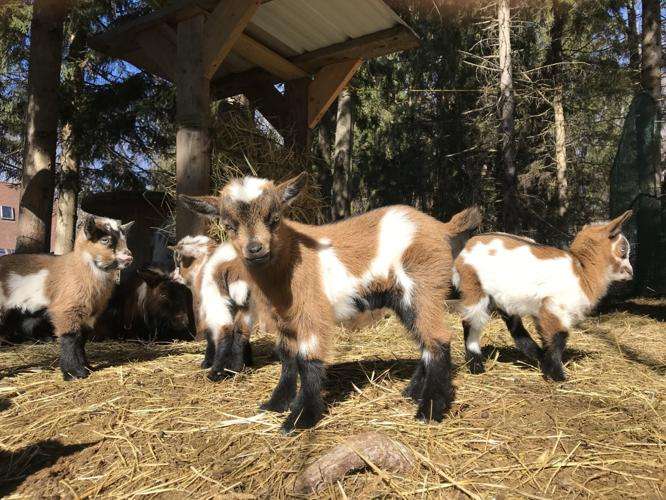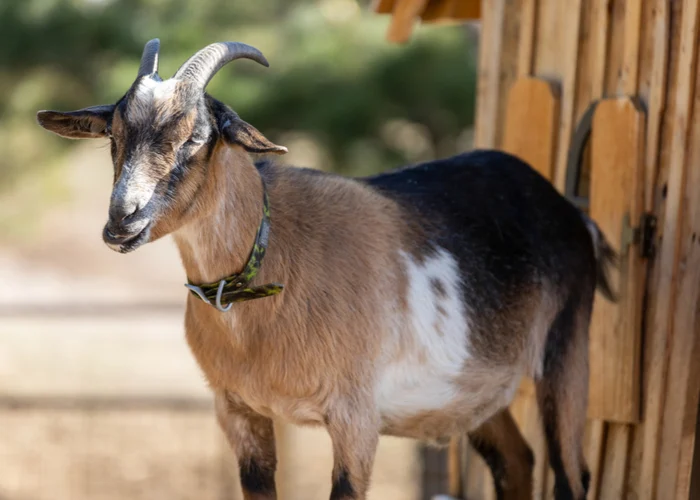
Description:
Pygmy goats have a stocky, well-muscled body with short legs and heads. The head and limbs are small in relation to body length, and the barrel is large and deep. A large forehead, upright ears, goat wattles, and horns are all features of the head’s dished profile. The muzzle is rounded, while the nose is short, wide, and flat. The coat is medium-length, straight, and fluctuates in density according to the season and environment.
These mammals, like all goats, have two major “toes” on the extremities of their feet as opposed to a single hoof, like a horse. The majority of people also have horns. Their diminutive size is what sets them apart.
Behavior:
These diminutive mammals are widely recognized for their curiosity and friendliness, just like the majority of goats. Contrary to popular opinion, goats do not consume everything. But, because of their curiosity, they will nibble and inspect whatever they find particularly intriguing.
Benefits/Uses:
They are primarily kept as pets and browsers in affluent nations, with the occasional milking. They are primarily used for meat in Africa, though milk, manure, and skins also have uses. They are also utilized as a cultural and economic resource, giving women jobs and emergency revenue from sales.
Origin/History:
A little breed of domestic goats is the pygmy goat. Goats were domesticated 8,500 years ago for meat, milk, and fiber; they are today widespread throughout the world. Goats are native to Southwest Asia. Native to West Africa, pygmy goats were introduced to the United States in the 1950s for zoo use and scientific study.
Keeping as pet:

- Food and Water
A hay rack or feed trough should be used for feeding hay. Any supplied loose meal ought to be fed into a feed trough. You shouldn’t feed it with soil. A low-sided water trough’s water supply should always be clean and accessible. Just in case one of your goats accidently falls into and is trapped there, this trough needs to be at a safe depth.
- Grooming and Accessories
To keep your goats clean and well-groomed, you’ll need a stiff brush and a curry comb. A washing mitt, hoof trimmer, and comb are additional items you’ll need for longer hair on things like tails and beards. If your goat is sick or the weather is particularly chilly, they could need a coat, but usually they shouldn’t.
- Shed
Your goats will require a shed that shields them from the weather. They must to be protected from the wind and able to stay dry. Also, it needs to be insulated to keep them warm in the winter and cool in the summer.
- Fencing
Pygmy goat fences should be at least 5 feet high so that the animals cannot jump over them. The fence’s frame needs to be strong and well-braced so that it can’t be easily knocked or blown over. Useful fencing alternatives include no-climb horse fencing and thick chicken wire since they are both difficult for goats to climb or acquire a grip in. Youngsters can fit through very small openings, therefore the fencing needs to be fitted inside the frame and held taut during installation to prevent them from slipping underneath it.
Table





